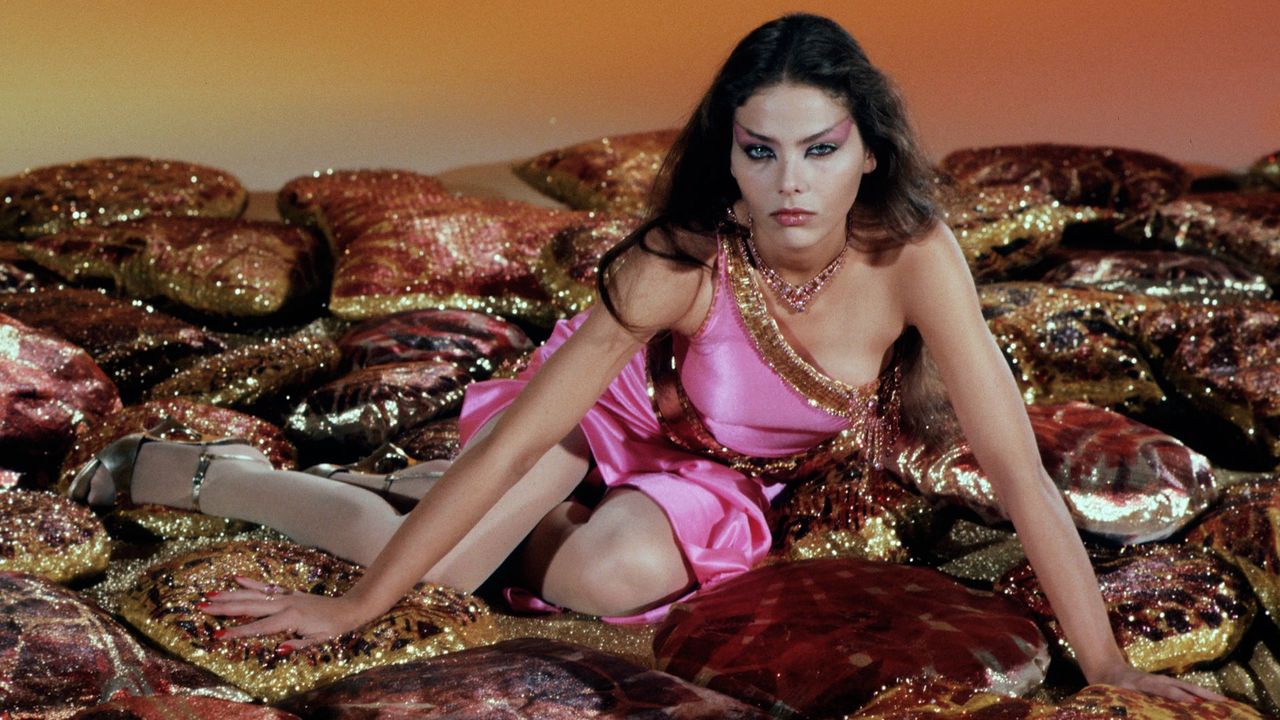What happens when Star Wars meets glitter, camp, and a Queen soundtrack?
Some films aim for subtlety. Flash Gordon aimed for a neon laser beam to the retinas, then turned the dial until your optic nerves begged for mercy. Dino De Laurentiis, the eternal gambler of cinema, rolled the dice on Alex Raymond’s pulp superhero, and what landed wasn’t
Star Wars but a campy, glitter-soaked space opera.
And you know what? It’s not bad. Not good in the traditional sense—no, no, let’s not be hasty—but in the delirious, “is this actually happening on screen?” sense. It’s the kind of film where Max von Sydow plays Ming the Merciless with Shakespearean gravitas while Brian Blessed bellows like some kind of horny hippo, and somehow it all
works.

The Plot: Or, the Best Football Play Ever Called
The story starts with Emperor Ming the Merciless (von Sydow), intergalactic tyrant, deciding he’s bored and wants to destroy Earth for fun. This apparently involves pressing buttons labeled “Earthquake” and “Volcano” like he’s playing
SimCity: Apocalypse Edition.
Back on Earth, Flash Gordon—played by Sam J. Jones, a square jawed quarterback with a protein shake up his ass—is flying on a small plane when disaster strikes. He crash-lands at the home of Dr. Hans Zarkov (Topol), a scientist so mad he forces strangers into his rocket ship at gunpoint. Flash, his new girlfriend Dale Arden (Melody Anderson), and Zarkov blast into space and end up on Mongo, a planet that’s basically one giant cosplay convention.
What follows is a parade of costumes, kingdoms, and eye-searing colors. Flash bounces from execution chamber to prison cell to death duel, surviving everything through a mix of football tackles and dumb luck. He falls under the lustful gaze of Princess Aura (Ornella Muti, hotter than a solar flare in a catsuit), while Dale tries to resist Ming’s slimy advances in a boudoir that looks like it was decorated by Liberace on acid. Eventually, Flash rallies the oppressed kingdoms of Mongo—tree people, hawkmen, and others dressed like rejects from a glam rock band—to storm Ming’s palace and save Earth.
It’s nonsense. And it’s perfect nonsense.

The Cast: Shakespeare in Space (and Sports Illustrated Too)
Sam J. Jones isn’t so much an actor as he is a human bicep with a smile. But his sheer earnestness makes Flash oddly endearing. He says every line like he’s still trying to remember the playbook, and that clueless energy fits the part.
Melody Anderson as Dale Arden is a blue-eyed beauty, yes, but she also plays the role with a self-aware campiness, somehow juggling scream-queen terror with wry one-liners. She’s the girl-next-door who suddenly finds herself dodging laser beams while being proposed to by Max von Sydow.
And Ornella Muti as Princess Aura? She doesn’t just steal scenes, she hijacks them, drives them to a Motel 6, and sets them on fire. Every frame of her is pure sultry villainess energy, all smirks and side-eyed glances.
The supporting cast is a buffet of overacting greatness. Brian Blessed as Prince Vultan shouts every line like he’s leading a pub singalong. Timothy Dalton, years before Bond, plays Prince Barin with such po-faced seriousness you’d think he wandered in from
Hamlet. And then there’s Max von Sydow, who delivers Ming’s every line like he’s reciting the Old Testament, even when dressed like a drag-queen dictator.

The Style: LSD Meets Comic Strip
Forget subtlety. The production design is a kaleidoscope of sequins, feathers, and primary colors. Mongo looks like Vegas by way of the Vatican. Palaces gleam with gold, hawkmen flap through matte-painted skies, and every villain looks like they’ve raided David Bowie’s wardrobe circa
Ziggy Stardust.
And let’s not forget Queen’s soundtrack. Freddie Mercury and company throw themselves into it like they’re scoring the end of the world. The main theme—“FLASH! Ah-ahhh!”—is both ridiculous and iconic. You could score seniors playing bingo with that track and it would feel epic.

The Sex and Camp: Ming’s Boudoir of Bad Decisions
What makes Flash Gordon uniquely unforgettable is how unapologetically horny it is. Ming lusts after Dale like a sweaty uncle at a wedding, while Aura practically tries to bed every man on Mongo within minutes of meeting them. Dale is forced to do a bizarre wedding dance in red chiffon, while Aura struts around in dominatrix chic.
Is it sleazy? Yes. Is it absurd? Absolutely. But it’s delivered with such cartoonish exaggeration that it feels more like burlesque than exploitation. This isn’t Showgirls; it’s Looney Tunes
with cleavage.
Why It Works: Sincerity in the Middle of Madness
The genius of Flash Gordon is that it never winks at the audience. Everyone plays their roles dead serious—even Brian Blessed, who seems like he might actually explode from enthusiasm. This sincerity is what transforms the film from trash to cult treasure.
Unlike later “so bad it’s good” movies, Flash Gordon ultimately knows exactly what it is: a live-action comic strip. The dialogue is melodramatic, the costumes are ludicrous, and the plot is thinner than Ming’s mustache wax. But it never apologizes for any of it. It leans in hard, and that commitment is what makes it work.

The Cult Legacy: From Box Office Fumble to Bedroom Poster
Upon release, Flash Gordon didn’t exactly storm the box office, especially in the U.S. where audiences were still high on
Star Wars. Critics were confused: was it a parody? A comedy? A straight space opera with rhinestones? Nobody knew.
But over the years, the film gained a cult following, fueled by VHS, midnight screenings, and the sheer audacity of Queen’s soundtrack. Today,
Final Thoughts: All Hail Camp Cinema
Flash Gordon
If you want serious science fiction, go watch 2001: A Space Odyssey. If you want to see Timothy Dalton fighting Sam J. Jones in a room full of spikes while Ornella Muti sizzles in the background and Queen belts out the chorus of doom, this is your film.





